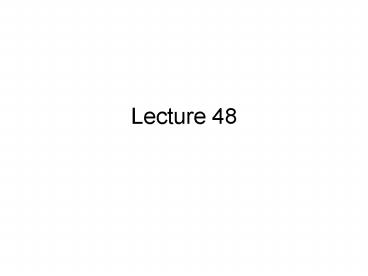Bio - PowerPoint PPT Presentation
1 / 43
Title:
Bio
Description:
Cousteau did not enjoy school, and in fact was expelled from one school as a ... do his underwater research after perfecting the underwater goggles and inventing ... – PowerPoint PPT presentation
Number of Views:56
Avg rating:3.0/5.0
Title: Bio
1
Lecture 48
2
Bio
- Jacques-Yves
Cousteau -
1910-1997
3
Cousteau was born in France
Cousteau was a fragile child who had stomach
problems and anemia.
- Cousteau did not enjoy school, and in fact was
expelled from one school as a teenager for
breaking 17 windows in the school.
4
He graduated second inhis class and became a
second lieutenant in the French navy.
- After a training cruise and tour of duty in
Shanghai, he enrolled in flight school. Just
before winning his wings, he was in a near-fatal
car accident, breaking both arms.
5
Wanted a ship to use as a platform to do his
underwater research after perfecting the
underwater goggles and inventing the aqualung
- His captain not only did not want him to use a
mothballed ship but commanded him to take a
vacation and stay off the water for 6 months
6
He instead took a vacation instead and found a
mine sweeper and named it the Calypso.
7
"Sometimes we are lucky enough to know that our
lives have been changed, to discard the old,
embrace the new, and run headlong down an
immutable course, it happened to me ... on
that summer's day, when my eyes were opened to
the sea."
8
Do not allow a mistake you made in the past, a
mistake someone else made in the present or a
mistake you might have made in the future
prevent you from arriving at your dream
9
homework
- 586 to 595
- Problems 1 -10 page 595
10
Block 2 go to
11
So far we have discussed how the rate of a
chemical reaction can be understood from the
point of view of the Collision Theory
12
The Collision theory states that any factor the
increases the number of effective collisionswill
increase the rate of a chemical reaction
- Surface area
- Concentration
- Nature of the reactants and products
- temperature
13
We also discussed that the molecule called a
Catalyst (or enzyme if is in a biological system)
can make a chemical reaction go faster by being
like a funnel or template to the chemical
reaction.Catalysts are not used up in a reaction
but increase the rate of a reaction
14
Simple synthesis
- Remember effective collisions
15
Activation energy is the energy necessary to get
a reaction going
Na Cl
NaCl
16
More complex
Very unstable
Activation complex
reactants
products
17
Activation complex
18
Complex double replacement
2H2 O2 ? 2H2O
reactants
Activation complex
products
19
Activation complex is a very high energy compound
that lasts only a microsecond
20
The activation energy is the energy necessary to
build the high energy activation complex
Activation energy
21
A reactant B activation energy C heat of reaction
?H D product E activation complex
22
exothermic
23
What is another name for the heat of the reaction
- Enthalpy
- ?H
24
Endothermic
25
How do catalysts change the amount of energy it
takes to make a chemical reaction progress?
26
Catalysts are molecules that allow difficult high
energy reactions to proceed without the necessity
of the activation energy
How would you draw that on a reaction energy
graph?
27
(No Transcript)
28
(No Transcript)
29
A reactant B activation energy C heat of
reaction D product E activation complex
30
What is this
31
In simple chemical reactions there is a single
step when a complex is formed and then finally a
product is created
- a bc ? abc ? b ac
32
In more complex chemical reaction there are more
steps in order to form the product
- 4HBr O2 ? 2 H2O 2 Br2
HBr O2 ? HOOBr HOOBr HBr ? 2HOBr 2HOBr
2HBr ? 2H2O 2Br2
33
these sub-reactions do not all run at the same
rate, HBr O2 ? HOOBr slow HOOBr
HBr ? 2HOBr fast 2HOBr 2HBr ? 2H2O
2Br2 fast
34
(No Transcript)
35
Which of the below reactions will dictate the
rate of the chemical reaction? HBr O2 ? HOOBr
slow HOOBr HBr ? 2HOBr fast 2HOBr
2HBr ? 2H2O 2Br2 fast
Rate determining step
36
In a complex chemical reaction the slowest of the
steps in a chemical reaction is the rate
determining step
37
Quiz 48
38
Concentration of a reactant will increase the
number of collisions and thus increase the rate
of the reaction
- In our lab today we are going to run the same
reaction where a solution changes color.
We are going to see if by increasing the
concentration the rate of the reaction speeds up
39
Sulfur clock Lab
- Compare the time that it takes for opaqueness to
occur when thiosulfate ion at different
concentrations are added to a constant
concentration of hydrogen ion. The thiosulfate
ion is obtained from Sodium thiosulfate and the
hydrogen ion is obtained form 1M HCl.
40
S2O3-2 2H ? S H2SO3
opaque
clear
We are going to use different concentrations of
S2O3 to see how long the reaction of the S2O3
with a 1 molar HCl takes
41
Often in chemical reactions instead of writing
HCl it is writen H
- We will see in the next section that this is
because the acids dissociate quickly from - HCl into into H and Cl-
- H2SO4 into into H and HSO4 -
- HNO3 into into H and NO3 -
42
Hint
- Get a good watch to time the reaction
- Make a bold X on the paper
43
Swirl the mixture of S2O3 and acid as you place
it over the X
- 60 ml of S2O3
- 60 ml of distilled H2O
- 30 ml of H2SO4































